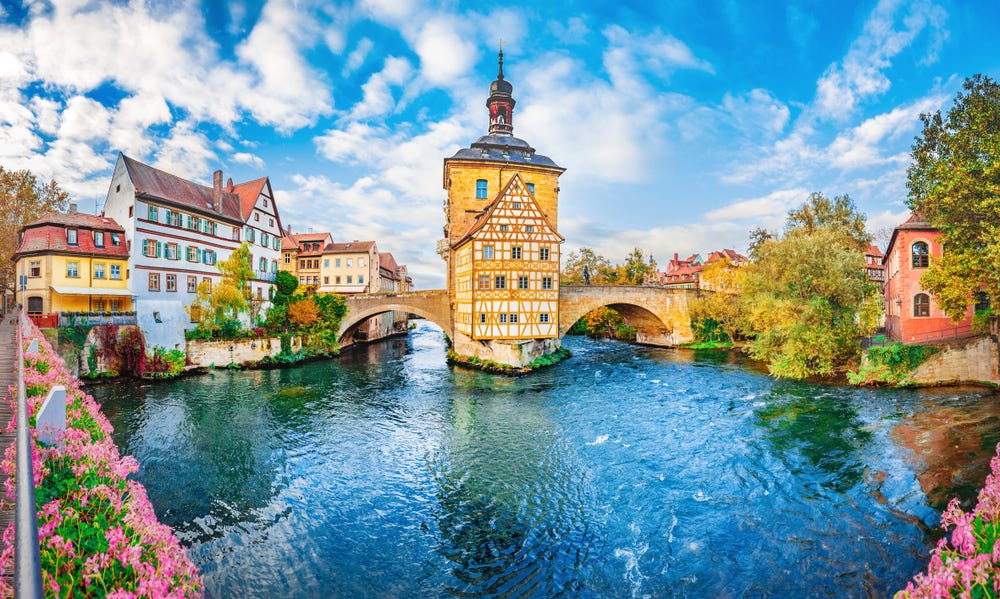How should Germans live?
An interesting article in the Süddeutsche Zeitung this week concerned itself with the word façade and what a bad wrap it has had in recent years. Façade has come to mean a pretence for a more malign intention. Originally though, it just meant the front of a house, which is made more beautiful than the interior in order to impress people walking past.
Just as façade has come to have a purely negative meaning, the idea of giving a house a pretty exterior went out of fashion a long time ago in Germany.
During the zweite Zerstörung - the decades after the war in which the Gründerzeit architecture that marked out German cities as architectural masterpieces were either replaced by concrete blocks or repaired on the cheap without stucco exteriors - façade became an ugly word.
I mention this because the theme of how Germans should live is likely to be a prominent one during this election year. Various parties of the left have proposed plans like banning detached housing, dispossessing landlords or capping rents.
Sign up to the regular updates straight into your inbox:
The major cities, in particular, have to cope with expanding populations. What type of houses should these people live in? And what role should the state play in ensuring rents don’t overwhelm lower-income households?
Berlin has attempted to address the question of costs by controlling the rents on over 90 percent of its housing stock.
Damning evidence that the rent cap cure is worse than the disease came with the publication of a report by the Deutsche Institute für Wirtschaftsforschung (DIW) last week. The study found that, while rents in the capital had dropped by 10 percent since the ‘rent cap’ law was passed a year ago, the number of to-let properties on the market dropped by two thirds. Simultaneously, rents outside the city boundaries soared, as ever more people had to look outside the city for a place to live.
Meanwhile, the district of Hamburg Nord has addressed a similar problem by banning the construction of detached homes. The Green-run district says that building Einfamilienhäuser is not an efficient use of spaceis also bad for the environment.
But economists worry that the same effect seen in Berlin would occur with a ban on detached houses: families looking for their own little piece of paradise would just move outside the city. Thus, the problems could be exacerbated: longer commutes making traffic worse, more urban sprawl, and displaced environmental impact.
Speaking to Spiegel, the head of the government’s economic advisory board, Lars Feld, said that banning detached homes would increase social inequality by making the detached houses that already exist much more expensive.
The Greens want to keep people in the cities for the environment - and the Left want people to have affordable rents. Isn’t the answer to be found in spending more money on city centres so that they are appealing places to live?
While the pandemic has undoubtedly worsened the picture, walking along a Berlin pavement has always been like playing extreme hopscotch - a hop over a dog turd here, a skip over discarded pizza box there, and jump over a dead rat to finish.
Grass is but a long distant memory for the city’s dried out parks, which are covered in a stubbly carpet of bottle tops and cigarette butts.
Money invested in keeping parks green and streets free of dog doo-doo would also go a long way towards encouraging young families that they don’t have to flee to suburbia once they’ve started a family.
The Greens are right to say that we need more apartment blocks and less suburban sprawl. The DIW is right to say that the answer to Berlin’s housing misery is to reduce red tape for the construction of more apartment blocks - only when supply increases will rents go back down.
But stronger aesthetic requirements should be placed on new construction. Pre-war Germany was blessed with some of the most beautiful architecture in Europe. Any new builds must come up to the standards set in the 1870s not in the 1970s. While there are some fantastic examples of modern architecture made to complement Berlin’s Altbau, they are still the exceptions that prove the rule.
Believing again in the beauty of cities is in everyone’s interest. Inner cities are the best environments for social equality. The various social classes live amongst each other. For the most part, their children go to the same schools - and they all have the same interest in keeping their commons paces clean and enjoyable to use.
The Süddeutsche Zeitung article I referred to earlier was discussing the completion of a new townhouse on the banks of the Isar - and whether it has succeeded in showing that façades aren’t just about pretence. If it managed, that’s a good start.
J.L.
Sign up to the regular updates straight into your inbox:
Who we are:
Jörg Luyken: Journalist based in Berlin since 2014. His work has been published by German and English outlets including der Spiegel, die Welt, the Daily Telegraph. Formerly in the Middle East. Classicist; Masters in International Politics & Arabic from St Andrews.
Axel Bard Bringéus: Started his career as a journalist for the leading Swedish daily Svenska Dagbladet and has spent the last decade in senior roles at Spotify and as a venture capital investor. In Berlin since 2011.




